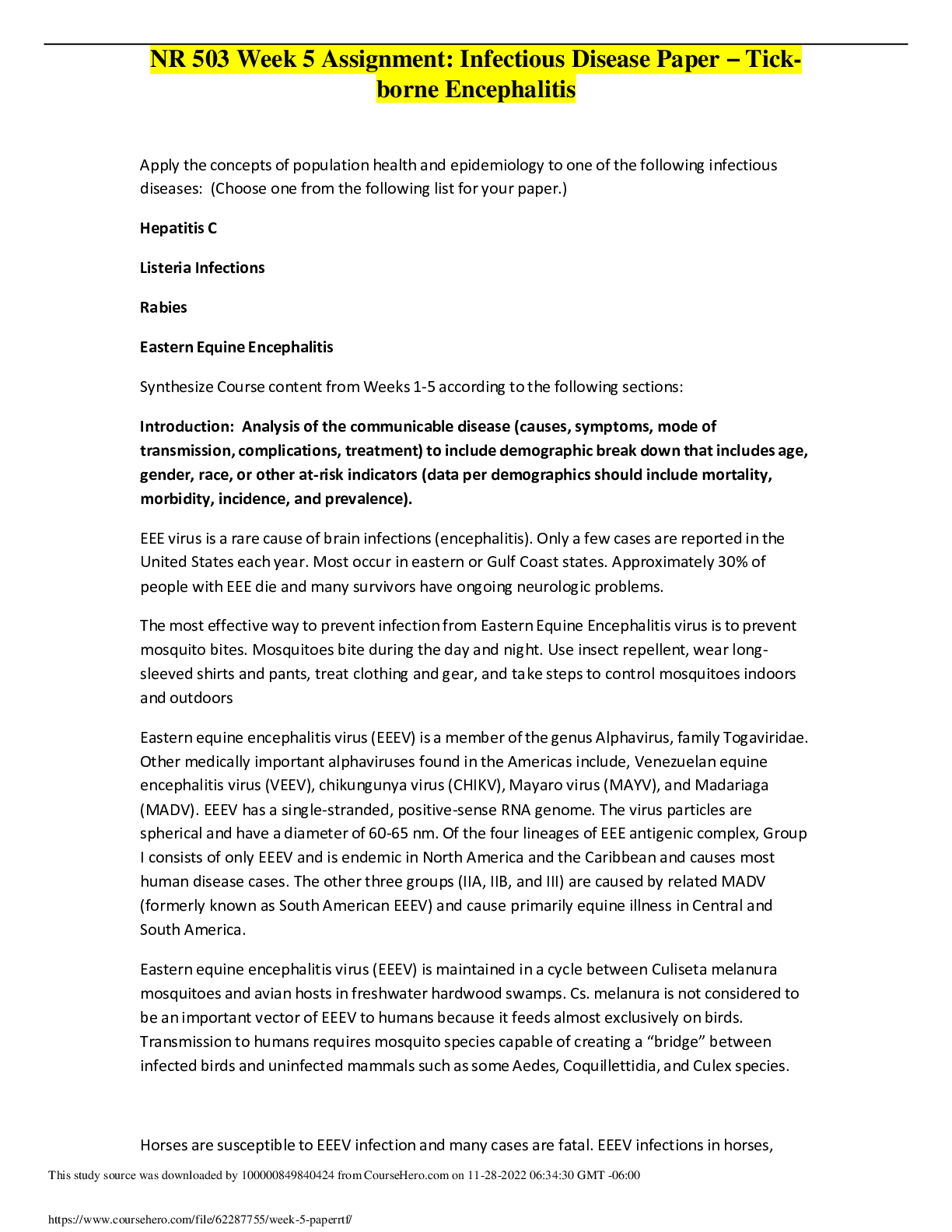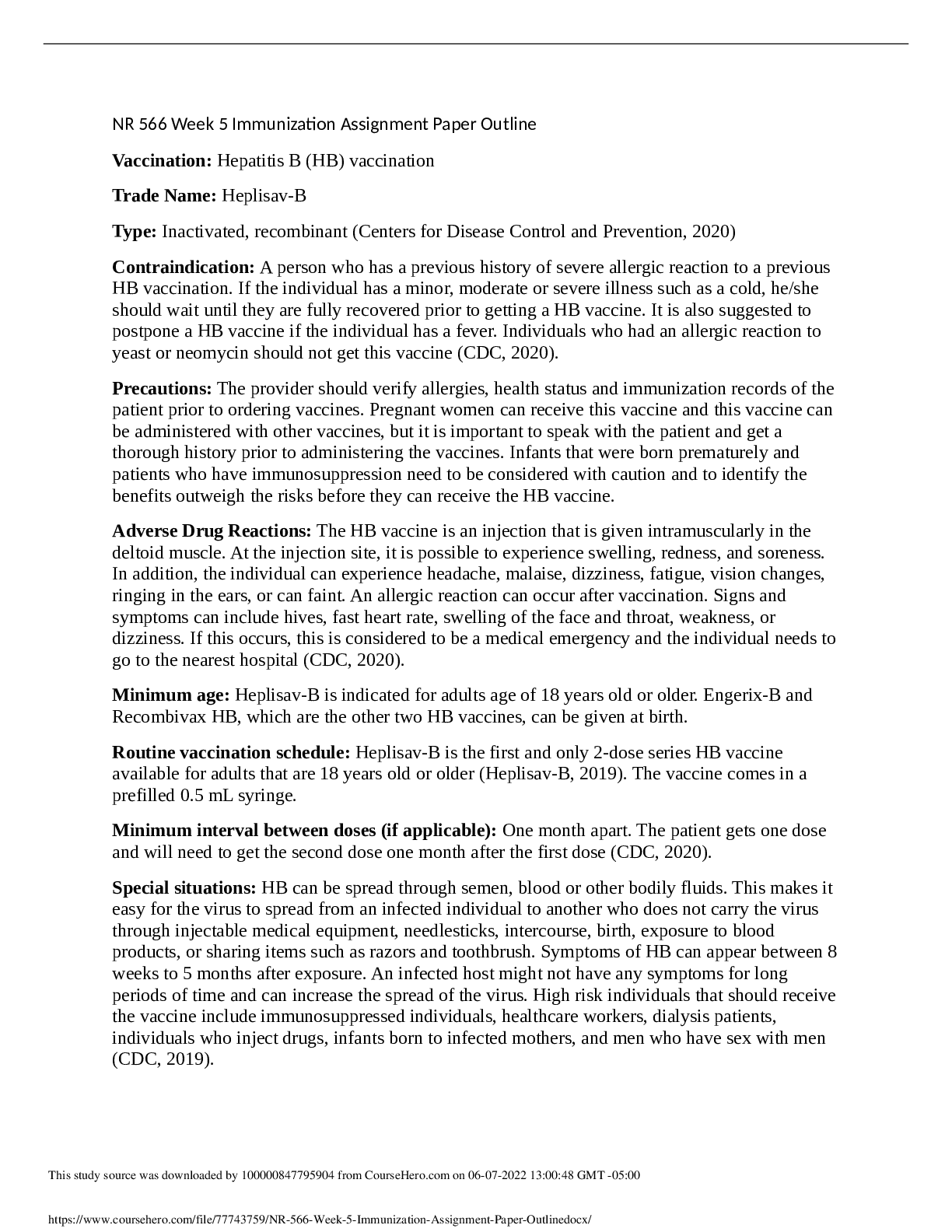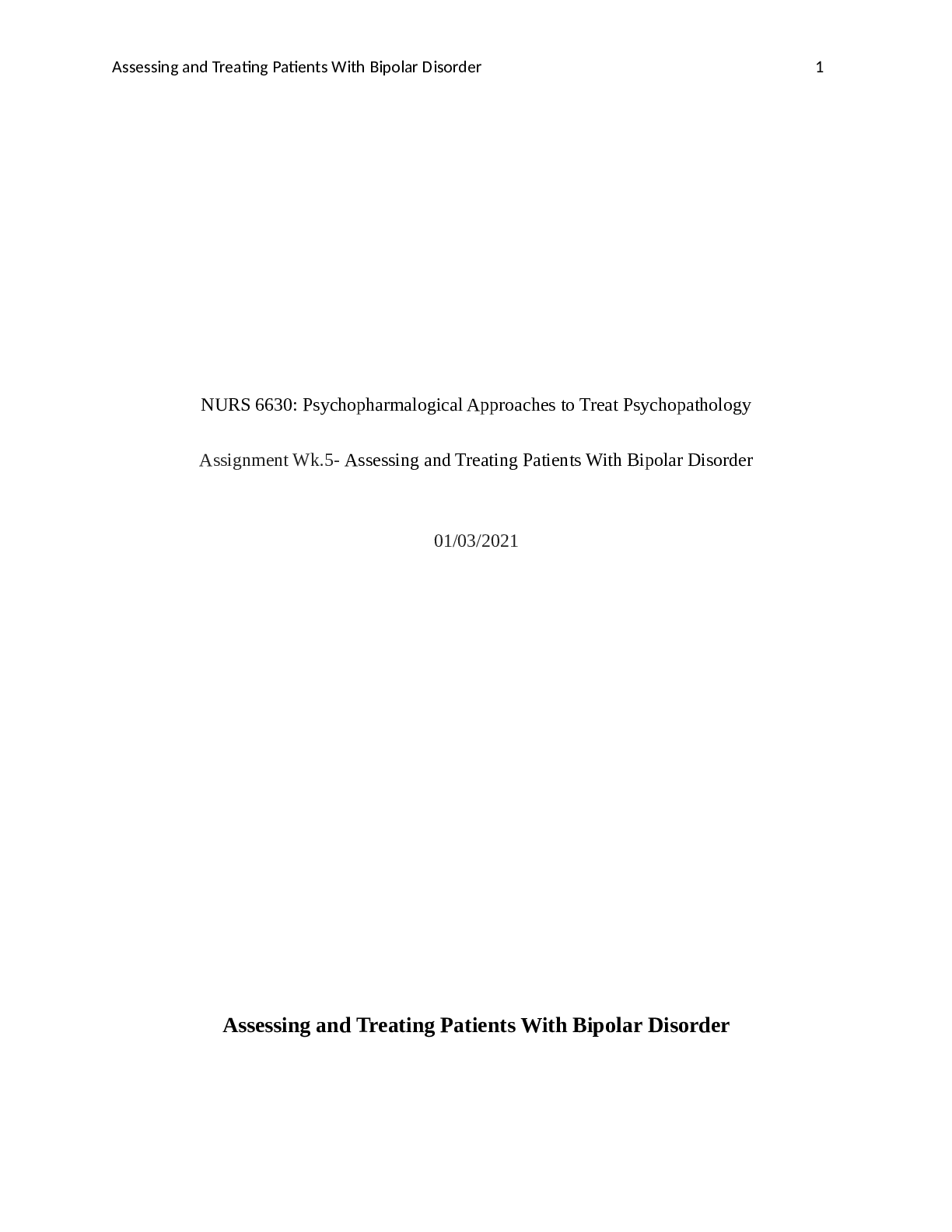*NURSING > CASE STUDY > NR 503 Week 5 Assignment: Infectious Disease Paper – Tick-borne Encephalitis (All)
NR 503 Week 5 Assignment: Infectious Disease Paper – Tick-borne Encephalitis
Document Content and Description Below
NR 503 Week 5 Assignment: Infectious Disease Paper – Tick-borne Encephalitis Apply the concepts of population health and epidemiology to one of the following infectious diseases: (Choose one fr... om the following list for your paper.) Hepatitis C Listeria Infections Rabies Eastern Equine Encephalitis Synthesize Course content from Weeks 1-5 according to the following sections: Introduction: Analysis of the communicable disease (causes, symptoms, mode of transmission, complications, treatment) to include demographic break down that includes age, gender, race, or other at-risk indicators (data per demographics should include mortality, morbidity, incidence, and prevalence). EEE virus is a rare cause of brain infections (encephalitis). Only a few cases are reported in the United States each year. Most occur in eastern or Gulf Coast states. Approximately 30% of people with EEE die and many survivors have ongoing neurologic problems. The most effective way to prevent infection from Eastern Equine Encephalitis virus is to prevent mosquito bites. Mosquitoes bite during the day and night. Use insect repellent, wear long- sleeved shirts and pants, treat clothing and gear, and take steps to control mosquitoes indoors and outdoors Eastern equine encephalitis virus (EEEV) is a member of the genus Alphavirus, family Togaviridae. Other medically important alphaviruses found in the Americas include, Venezuelan equine encephalitis virus (VEEV), chikungunya virus (CHIKV), Mayaro virus (MAYV), and Madariaga (MADV). EEEV has a single-stranded, positive-sense RNA genome. The virus particles are spherical and have a diameter of 60-65 nm. Of the four lineages of EEE antigenic complex, Group I consists of only EEEV and is endemic in North America and the Caribbean and causes most human disease cases. The other three groups (IIA, IIB, and III) are caused by related MADV (formerly known as South American EEEV) and cause primarily equine illness in Central and South America. Eastern equine encephalitis virus (EEEV) is maintained in a cycle between Culiseta melanura mosquitoes and avian hosts in freshwater hardwood swamps [Show More]
Last updated: 1 year ago
Preview 1 out of 6 pages

Also available in bundle (2)

NR 503 Population Health, Epidemiology And Statistical Principles Entire Course Week 1 – 8 BUNDLED (100% CORRECT ELABORATIONS)
NR 503 Week 1 Quiz: Acknowledgement Practice Quiz: Academic Writer NR-503 Week 1 Discussion: Exercise and Discussion Questions from Curley Textbook: Chapter 1, Exercise 1.5 NR 503 Week 1 Discussion:...
By A+ Solutions 1 year ago
$14.5
37

NR 503 Week 5 Assignment: Infectious Disease Paper (Collection)
NR 503 Week 5 Assignment: Infectious Disease Paper – Influenza NR-503 Week 5 Assignment: Infectious Disease Paper – COVID-19 Pandemic NR 503 Week 5 Assignment: Infectious Disease Paper – Communi...
By A+ Solutions 1 year ago
$14.5
4
Reviews( 0 )
Document information
Connected school, study & course
About the document
Uploaded On
Nov 28, 2022
Number of pages
6
Written in
Additional information
This document has been written for:
Uploaded
Nov 28, 2022
Downloads
0
Views
51































 (1).png)



